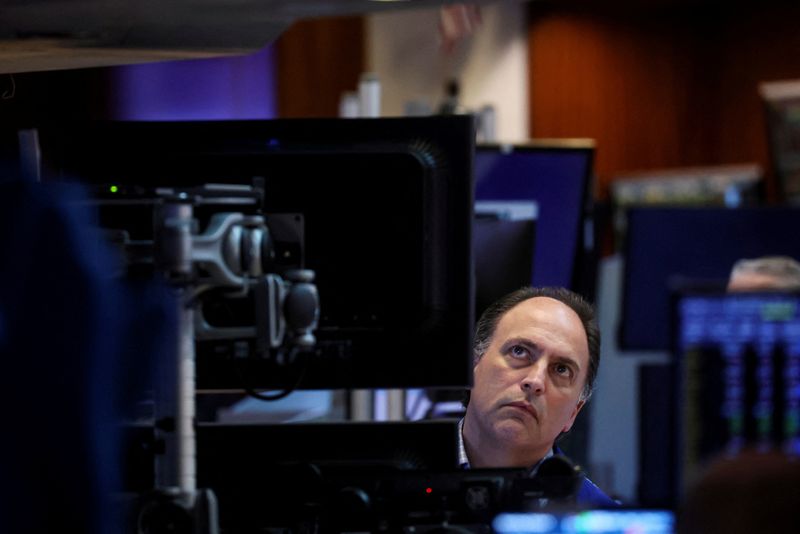US stocks just lower; caution ahead of presidential election, Fed meeting
U.S. stocks traded marginally lower Monday at the start of a week that includes a tightly-fought presidential election and a Federal Reserve meeting.
At 09:35 ET (14:35 GMT), the Dow Jones Industrial Average dropped 45 points, or 0.1%, the S&P 500 index slipped 3 points, or 0.1%, and NASDAQ Composite fell 55 points, or 0.3%. Trump, Harris set for tight presidential race
Investors were largely on edge before presidential elections on Tuesday, with recent polls showing Donald Trump and Kamala Harris were set for a tight race.
Recent increases in the dollar and Treasury yields showed some investors were positioning for a Trump victory, which is expected to result in more inflationary policies.
Analysts indicating that the outcome could significantly impact the market performance, especially the Big Tech sector.
Specifically, according to Wedbush analysts, a potential Trump victory is causing concern among global tech investors due to the possible escalation of the US-China tech conflict and increased tariffs.
“A major change in tariffs and a harsher stance on China we believe would significantly impact the supply chain, Nvidia (NASDAQ:NVDA ), Beijing retaliatory impacts on Apple/Tesla likely, and slow the pace of the AI Revolution,” analysts led by Dan Ives said in a note.
The quarterly earnings season is set to continue, with around a fifth of the companies in the benchmark S&P 500 due to unveil their latest quarterly earnings this week.
Marriott International (NASDAQ:MAR ) stock fell 2.7% after the hotel operator cut its annual profit forecast, as domestic travel demand in the U.S. and China remains weak.
Viking Therapeutics (NASDAQ:VKTX ) stock rose 5.4% after the biotech posted data on its oral weight-loss drug showing better-than-expected results from a Phase 1 trial. Fed set to cut interest rates
Focus this week is also on a Fed meeting , with the central bank widely expected to cut interest rates by 25 basis points after a 50 bps cut in September.
Markets will be watching for any commentary from the Fed on its plans for future rate cuts, especially in the light of recent data showing resilience in the U.S. economy and stickiness in inflation, which dampen the outlook for lower rates.
But Fed Chair Jerome Powell is unlikely to commit to any set pace of monetary easing, given that the central bank has so far maintained a data-driven approach to policy.
Still, the meeting comes after nonfarm payrolls data on Friday showed job growth slowed sharply in October, with a downward revision in readings for the past two months indicating that the labor market was cooling. Crude soars on OPEC+ decision
Oil prices rose strongly Monday after OPEC+, a group of producing nations, delayed a planned output hike in December by at least a month because of recent pressure on prices from weak demand.
By 09:35 ET, the Brent contract climbed 2.5% to $74.92 per barrel, while U.S. crude futures (WTI) traded 2.8% higher at $71.40 a barrel.
The Organization of the Petroleum Exporting Countries and its allies, known as OPEC+, announced on Sunday that it will again delay a planned output hike of 180,000 barrels per day by at least a month.
This was the second time it has extended a 2.2 million bpd cut and may suggest worries among the producing countries about global demand.
Both contracts had posted weekly declines last week of over 3% as record US output had added to the demand concerns. (Ambar Warrick contributed to this article.)
Source: Investing.com
